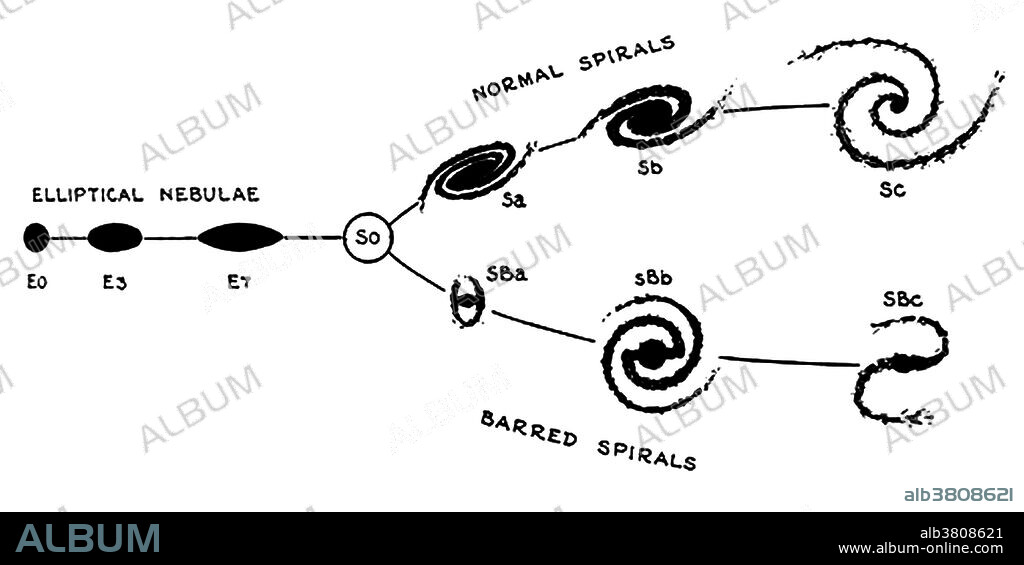alb3808621
Hubble Sequence, Galaxy Classification, 1926

|
Add to another lightbox |
|
Add to another lightbox |



Buy this image.
Select the use:

Title:
Hubble Sequence, Galaxy Classification, 1926
Caption:
The Hubble sequence is a morphological classification scheme for galaxies invented by Edwin Hubble in 1926. It is often referred to as the Hubble tuning-fork diagram because of the shape in which it is traditionally represented. Hubble divided regular galaxies into 3 broad classes: ellipticals, lenticulars and spirals, based on their visual appearance. A fourth class contains galaxies with an irregular appearance. To this day, the Hubble sequence is the most commonly used system for classifying galaxies, both in professional astronomical research and in amateur astronomy.
Category:
Science: History
Credit:
Album / Science Source
Releases:
Image size:
4468 x 2236 px | 28.6 MB
Print size:
37.8 x 18.9 cm | 14.9 x 7.5 in (300 dpi)
Keywords:
1889 • 1926 • 1953 • 19TH CENTURY • 20 20TH XX XXTH TWENTIETH CENTURY • 20 XX TWENTIETH CENTURY • 20TH CENTURY • 20TH • AMERICA • AMERICAN • ART • ARTWORK • ASTRONOMIA • ASTRONOMICAL • ASTRONOMY • BARRED • BW • CELEBRITIES • CELEBRITY • CLASSES • CLASSIFICATION • CLASSIFIED • CLASSIFYING • DIAPASON • DIGRAM • DRAWING • E0 • E3 • E7 • EDWIN HUBBLE • EDWIN P. HUBBLE • EDWIN POWELL HUBBLE • ELLIPTICAL • FAMOUS PEOPLE • FAMOUS • GALACTIC • GALAXIAS • GALAXIES • GALAXY • HISTORIC • HISTORICAL • HISTORY • HUBBLE SEQUENCE • HUBBLE TUNING FORK • HUBBLE • ILLUSTRATION • ILLUSTRATIONS • ILUSTRATION • IMPORTANT • IRREGULAR • LENTICULAR • MORPHOLOGIC • MORPHOLOGICAL • NEBULAE • NOTABLE • OUTERSPACE • RESEARCH • S0 • SA • SB • SBA • SBB • SBC • SC • SCHEME • SCIENCE • SCIENCE: HISTORY • SEQUENCE • SPACE (COSMOS) • SPACE • SPATIAL • SPIRAL (SHAPE) • SPIRAL • TUNING FORK • TUNING-FORK • TWENTIETH CENTURY • TYPE • UNITED STATES • UNIVERSE • US • USA • WELL-KNOWN
 Pinterest
Pinterest Twitter
Twitter Facebook
Facebook Copy link
Copy link Email
Email
